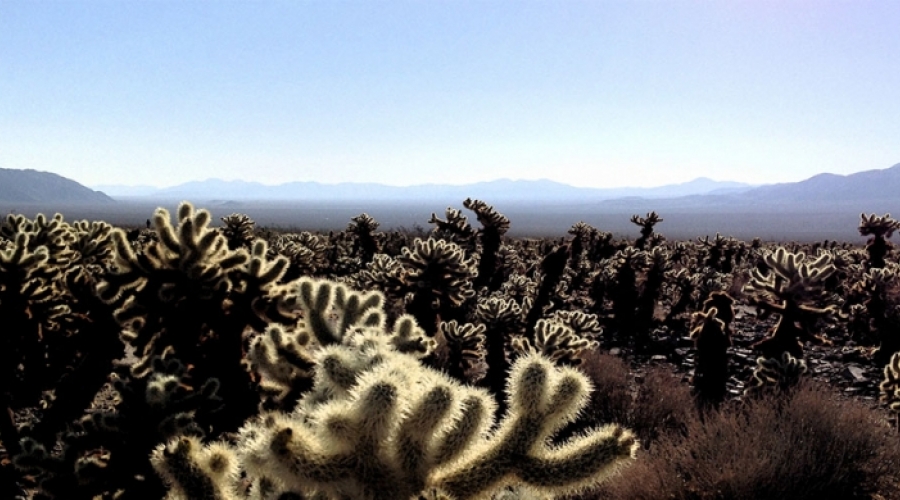
Joshua Tree has long been known as a creative enclave, home to art walks and art galleries, and nearby spots like The Integratron are meant to dissolve barriers between the conscious thinking mind and the creative unconscious. But of course, Joshua Tree is best known for its national park and the beautiful, arid landscape. Since October 2016, Joshua Tree has also been the site of the Joshua Tree Art Innovation Laboratory (also known as JT Lab), founded by Otis College of Art and Design lecturer and artist Rebecca Lowry, focused on helping artists work with National Parks. Now, as the original two-year program begins to wind down, Lowry looks back at some of the projects she’s worked on through the partnership.
Collaborations lead to artistic innovation, natural preservation
Before JT Lab was born, there were opportunities for artists to be involved with the National Park service via artist residencies. But a one-month residency doesn’t really fulfill the potential for collaboration between artists and the National Parks, Lowry said. “We thought, why don’t we come up with some kind of initiative that can explore different ways artists can engage in beneficial collaborative work with the National Parks,” Lowry said.
Some of the projects and collaborations she and other artists have worked on include:
- The Embedded Art Professional. This is a role that works closely with the Parks, and works closely with Park administration on special projects. “When someone [from the Parks department] wants to look at something from a different angle, they can swing by my desk, or ask me to sit in on a meeting so I can ask the questions no one else would ask,” Lowry said. Lowry worked on the “Starcount” program, meant to address the issue of light pollution. “Celestoscopes” are placed in prominent locations in the park, and treat visible stars as endangered species, and provides visitors with information about light pollution.
- The Volunteer Art Program. The Volunteer Art Program is designed to engage with a wide and varied population of artists, Lowry said. That program is run by Jenny Kane, who is an Otis College alum from the MFA Social Practice program. One of the big initiatives that has come out of this program is the Artists’ Teas program, a weekly meeting of artists and park visitors that explores the diversity of art production inspired by the park.
- Artist Programs. Like the Rangers programs at the National Parks, JT Lab's Artist Programs allow local artists to come up with ideas for creative endeavors. Lowry found that the Artist Programs would draw different members of the community to the park than the ones who came for Ranger programs, which meant more community exposure for the parks.
- Peer-to-Peer Internship Program. Lowry also developed a program to host interns from Otis College of Art and Design and local community college, Copper Mountain College, at Joshua Tree Park every summer. “The idea is to give creative students the opportunity to work with the Parks. We call it “peer-to-peer” because those students would be working the projects that directly target their own age group,” Lowry said.
From the beginning, Lowry intended the JT Lab to work as a model for other National Parks interested in forming collaborations with artists and creatives. “We wanted a two-year time frame to prove to people that the things we’re doing in Joshua Tree don’t depend upon a magical set of circumstances or skill sets—this could be replicated at other parks,” Lowry said.
And parks along the West Region, from the Canadian border to Mexico, as far west as Hawaii and the American Samoa Islands to parts of Idaho, have expressed interest in similar programming. “It’s more than we could have hoped for when we started out,” Lowry said.
Otis College of Art and Design and Joshua Tree National Park launched the Joshua Tree Art Innovation Laboratory (JT Lab) in 2016 as part of the National Endowment for the Arts "Imagine Your Parks" project. The initiative explores ways that artists can contribute to the National Park Service’s mission and strengthen the role artists play in the National Park Service (NPS). Learn more about JT Lab.
Halley Sutton is a graduate of the Otis College of Art and Design MFA Writing program.


